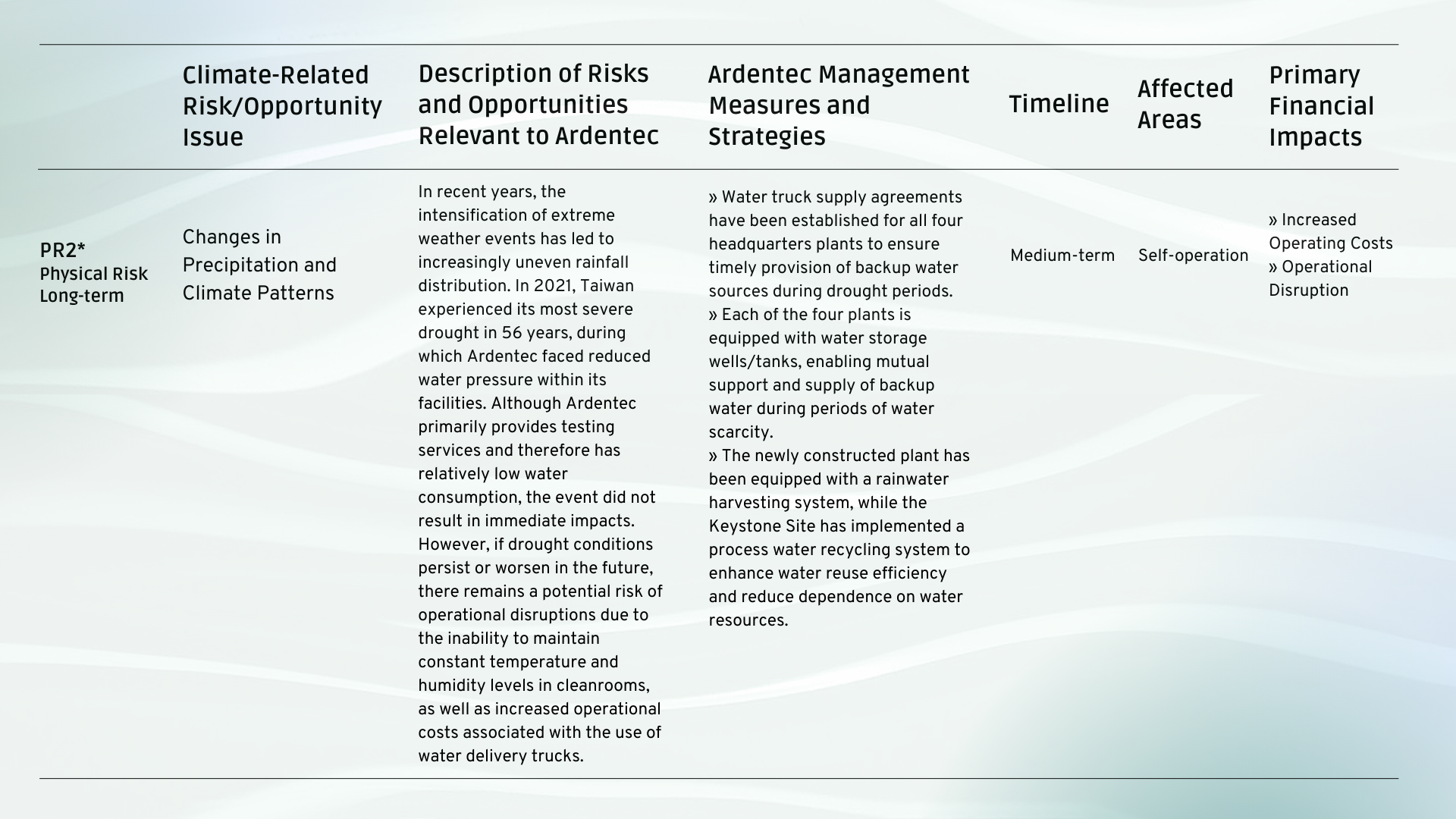|
Climate Strategy and Program |
Based on the results of the materiality assessment, Ardentec has identified [PR2 Changes in Precipitation and Climate Patterns], [R5 Changes in Customer Expectations and Demand for Services], and [O5 Use of Low-Carbon Energy] as the current key climate risks and opportunities. To effectively monitor and respond to these climate risks and opportunities, the table below summarizes the relevant climate-related risks and opportunities for Ardentec, along with management strategies and response measures. The climate risks and opportunities are listed in order of materiality, from high to low.
Note: * denotes key climate risk and opportunity issues.

.png)
More information can be found in Chapter 5 – Environmental Sustainability: Climate Change Adaptation and Mitigation (pp. 89–96) of the 2024 Sustainability Report.
Please click here to view the 2024 Sustainability Report.





